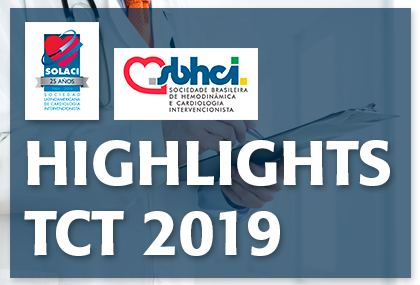Courtesy of SBHCI.
Both fractional flow reserve (FFR) and optimal coherence tomography (OCT) can be useful to help define intermediate coronary lesions and optimize PCI outcomes.

The FORZA study presented at San Francisco TCT 2019 scientific sessions simultaneously published in JACC randomized patients with intermediate lesions 1:1 to FFR vs OCT.
For the FFR arm, PCI was performed if FFR was ≤0.8; for the OCT arm, revascularization followed only if stenosis area was ≥75% or between 50 and 75%, with minimal luminal area <2.5 mm², or plaque rupture.
Angina (by Seattle questionnaire) major cardiac events and cost were assessed by the end of the study. Primary end point was the classic composite of MACE plus significative angina (<90 SAQ frequency scale) at 13 months.
Read also: TCT 2019 | PARTNER 3: Health Status Outcomes From a Randomized Trial of Transcatheter vs. Surgical Aortic Valve Replacement in Patients With Severe Aortic Stenosis at Low Surgical Risk.
A total 350 patients with 446 intermediate lesions were randomized to FFR (n=176) or OCT (n=174).
Primary end point of MACE plus significative angina at 13 months occurred in 14.8% of patients receiving FFR vs 8% of patients receiving OCT (p=0.048). This outcome was driven by non-significant occurrence of all primary end point components.
By the end of follow up, the need for antianginal medication was significantly higher in the FFR group (p<0.001) though the total cost was much lower (p<0.001) compared against OCT.
Conclusion
In patients with intermediate lesions by angiography, guiding revascularization with OCT was associated with lower end point rate (composite of MACE and significant angina). FFR required more medication to control the symptoms, but the final cost was much lower.
Courtesy of SBHCI.
Link to the SBHCI Publication HERE
Original Title: FORZA: A Randomized Trial of Fractional Flow Reserve vs. Optical Coherence Tomography to Guide Revascularization of Intermediate Coronary Stenoses.
Author of the Original Article: Francesco Burzotta.
Get the latest scientific articles on interventional cardiologySubscribe to our weekly newsletter
We are interested in your opinion. Please, leave your comments, thoughts, questions, etc., below. They will be most welcome.





